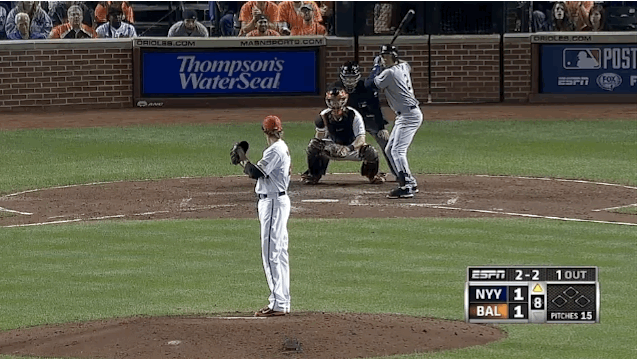Andrew Miller
Relief Pitcher
Bats: L Throws: L
Age on Opening Day: 29
2014 Snapshot
Andrew Miller had a career year in 2014 between the Red Sox and Orioles. Through 42.1 innings in Boston, Miller held a 2.35 ERA before being dealt for minor league pitcher Eduardo Rodriguez during Boston’s massive fire sale before the trade deadline. Down the stretch for Baltimore, he was even more impressive, posting a 1.35 ERA in 20 innings. His strikeout, home run, and hit rates were all at career-bests. And at 29 years old, Miller has hit free agency at just the right time.
Pros
Miller strikes out an insane number of batters. This season, in 62.1 innings, he fanned 103 batters, equating to a 14.9 K/9 rate and a 42.6 strikeout percentage. Both of those numbers are second only to Aroldis Chapma among pitchers with 50 innings or more.
What was it? The numbers, albeit in a small sample size, point towards his slider. His slider was over 13 runs above average this season, far better than ever before. He has been able to use his low arm slot and deadly slider to his advantage, producing gems like this:
Yes, that’s not Miller striking out a power-hitting lefty, that’s Derek Jeter. While that may not be too impressive anymore, it highlights my point: Miller dominates righties, too. Righties hit just .145/.245/.202 against him, which was actually slightly worse than the .163/.206/.261 line lefties put up against him. Although his numbers overall favor Miller against lefties, he has actually reversed his platoon splits over the past two seasons. That doesn’t mean he will going forward, but it is something to consider.
Forget about the strikeouts for a minute and look at the number of baserunners allowed. Miller had a 0.802 WHIP this season, a career-best by far. Over the last three years, he has really improved in this manner, bringing his walks down to a (somewhat) manageable level, and limiting his hits allowed as well. He is running on all cylinders right now.
Cons
Miller’s track record of major success is relatively short. From 2006 through 2012, Miller owned a career 5.54 ERA and walked 5.4 batters per nine innings. Even as he started to turn his career around in 2012, he walked five batters per nine innings. That should be an area of concern for Sandy Alderson. He could easily regress back to his career averages.
His 4.8 hits per nine innings rate from last season is, without a doubt, unsustainable. You don’t see that very often, and you definitely don’t see is multiple years in a row.
As good as Miller is, his biggest weakness is the fact that he doesn’t really fit. Signing Miller would only muddle up the closer situation even more. Jenrry Mejia, Jeurys Familia, and Bobby Parnell can handle the late innings just fine. If the Mets are going to spend big money on a multi-year contract, it shouldn’t be for a relief pitcher. Maybe Miller would be a better fit if the team had more money.
Projected Contract
To give you a sense of what Miller is looking for, check out what Jason Mastrodonato wrote for MassLive the other day:
According to an industry source, Miller is seeking at least a four-year deal and isn’t listening to any other offers unless the average annual value is “astounding.”
I am assuming “astounding” is at least $12 to $15 million per year, which is ridiculous for Miller. Yes, he is 29, but he has also only been dominant for two seasons. That being said, he is arguably the top relief pitcher on the market, meaning there will be demand for him. He won’t get what he wants, but I see a four-year deal as almost a guarantee. I see Miller getting four years and $40 million.















